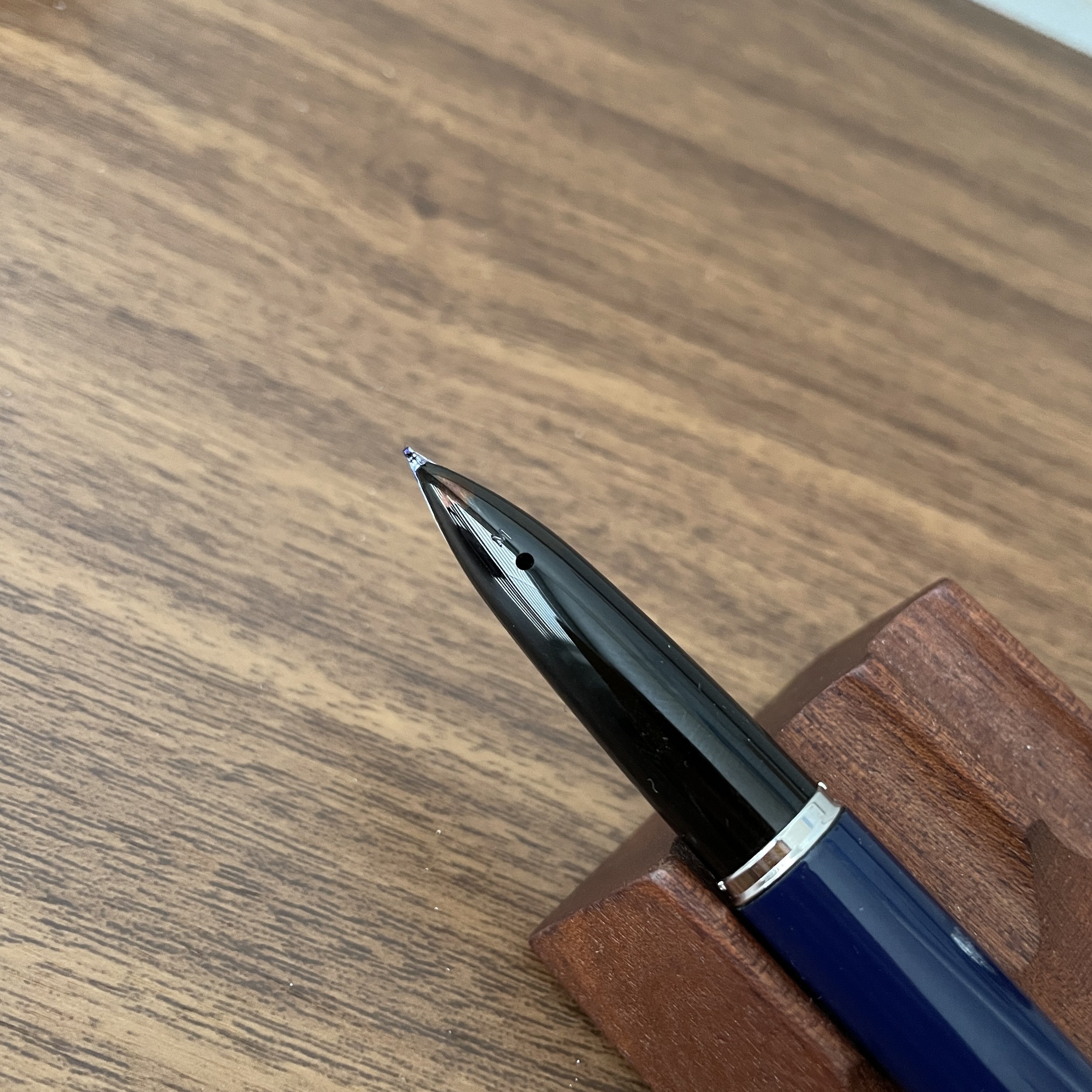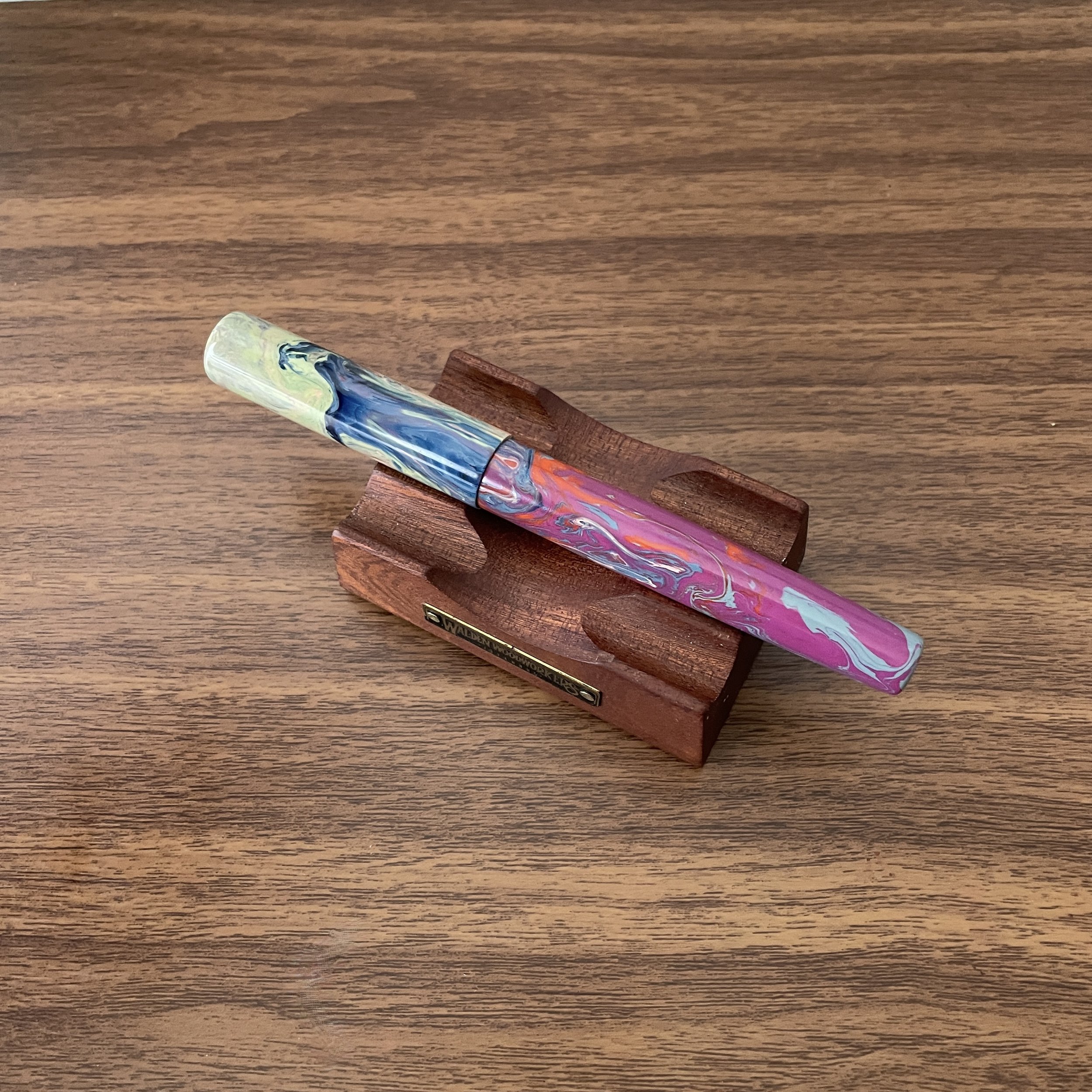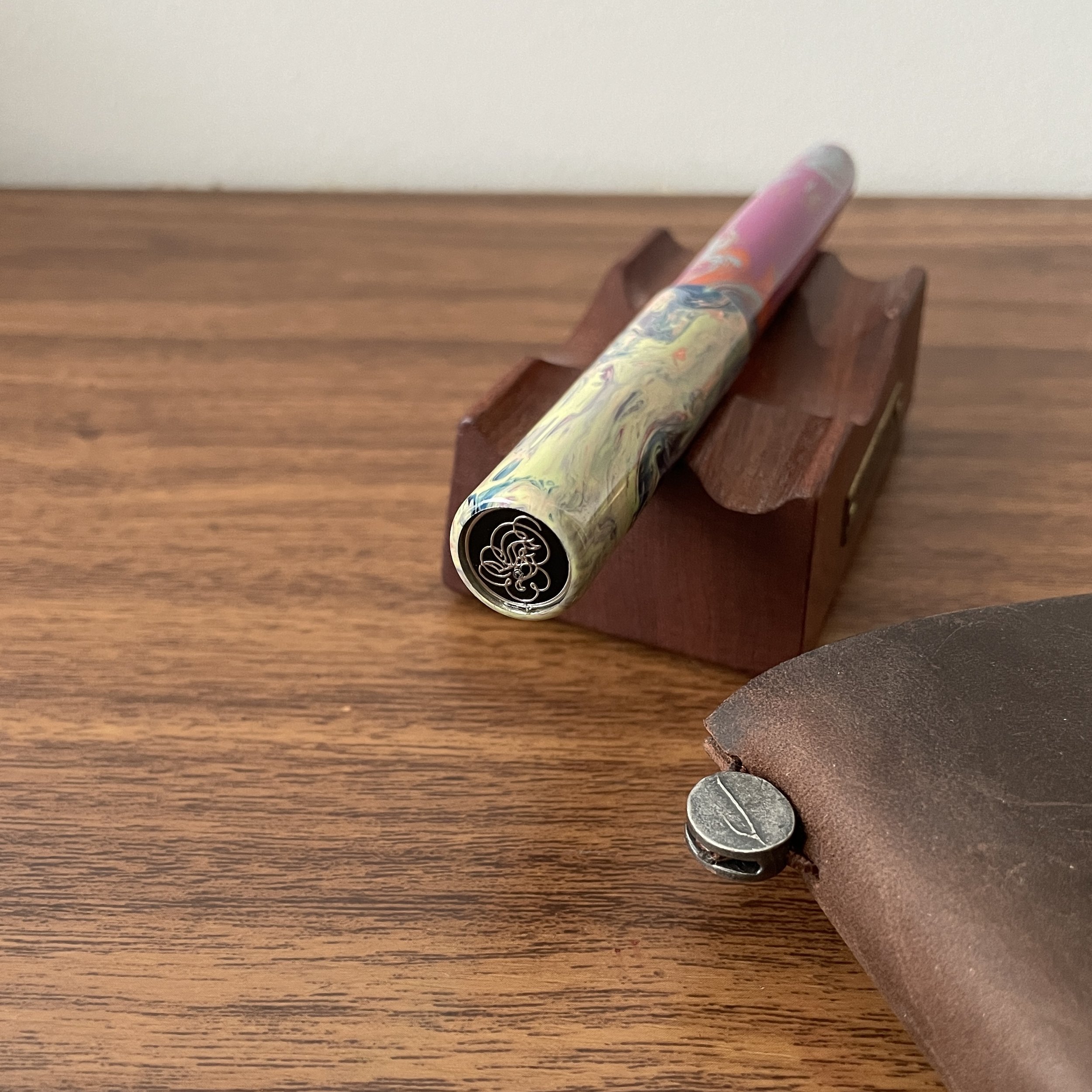I say “sort-of-revisited” because I previously reviewed the “original” Narwhal Original, and in the three years or so since publication Narwhal fountain pens has not only introduced a new version of the pen with a different filling mechanism, but has rebranded with a new name and logo, and will be known as Nahvalur Pens going forward. Nahvalur made the announcement at this year’s D.C. Pen Show. Apparently “Nahvalur” is the Icelandic word for “Narwhal,” and the choice was made for unspecified branding/trademark purposes. I don’t necessarily find this aspect of the pen industry all that interesting or exciting, though there has been much discussion elsewhere about the rebrand and “other matters.” I prefer to focus on the writing experience, but I will say that I like the new Nahvalur logo, and the new “Original Plus” fountain pen continues to move the company in the right direction.
We have yet to see the new Nahvalur logo and branding on the pens themselves, as the rebrand was only recently announced. Therefore, the current stock of Nahvalur pens still bear the name “Narwhal” on the box and cap band. (Hey - it could increase the collectibility if the design changes in the future, right?)
“Original” vs. “Original Plus”: What’s the Difference?
In terms of functionality, the biggest change is that on the Original Plus, Nahvalur switched the filling system from a piston to a vacuum-filler. More on that below. Aesthetically, the two pens share a lot of the same design language, with a few key distinctions. As I mentioned in my “Original” review, the bright swirled acrylic used in the first pen didn’t speak to me. As in, at all. Here, the look is much more subtle, as Nahvalur opted for a more transparent material that offers excellent visibility into the barrel while keeping swirls of the four signature colors: purple, yellow, green, and blue. It’s a subtler look that I believe will ultimately appeal to a wider audience.
Those who own both the “original Original” and the “Original Plus” will note that the band has been moved from the body of the pen to the cap, probably to accommodate the change in filling system.
Build Quality and Filling System
The first thing I remarked when I picked up the Original Plus is how solid the pen feels in the hand. At the sub-$100 price point, and especially at the sub-$60 price point, one of the first things I look at is whether or not the pen feels flimsy or insubstantial, and whether I think it will hold up to true “workhorse” use as a daily writer. Here, the Original Plus easily feels as well-built and durable as the pens I consider to be its peers, the PenBBS 456 and the TWSBI Vac700R. All of the components feel tightly threaded, with no rattling or loose parts. The longer section is comfortable to hold, and the cap quickly deploys with 2.5-3 turns.
The advantage of a vacuum filler is that it uses the entire barrel as an ink reservoir, and here the more transparent material allows you to easily see your ink supply.
As I noted, the major design change is to the filling system. Nahvalur chose to substitute a vacuum-filling system for the piston, and I commend them for doing so. Though a vacuum filler can appear intimidating to new users, they’re fairly simple to use and hold a ton of ink. To fill the pen, you unscrew the blind cap at the end, extend the plunger, place the nib into an inkwell or ink bottle, and press down. The negative pressure will suck ink into the barrel, and you can repeat once or twice more to increase capacity. Even with one fill, however, you will typically get much more than your standard piston filler and certainly more than your standard cartridge-converter pen. Note that like a Japanese-style eyedropper, a vacuum filler has a “safety valve” that engages when the blind cap is screwed all the way down, which helps prevent leaks and makes these great pens for airplane travel. At some point, however, with the valve closed the feed may run dry, and you will need to slightly unscrew the blind cap to allow more ink to flow from the barrel to the nib. If I’m using a vacuum-filler for a longer writing session, I’ll go ahead and open the valve before I get started.
The Nahvalur Original Plus unposted. While the cap technically posts on the barrel, the pen ends up being so long that I can’t imagine anyone would be able to use it that way.
Overall Writing Experience
Those who enjoy smooth nibs will enjoy Nahvalur pens. Nahvalur/Narwhal has performed a lot of tuning on their nibs and feeds in-house, resulting in what I would characterize as a “glassy smooth” writing experience that requires very little pressure. As a result, the nibs write a slightly broader line than their designation and there is no “extra fine” nib option. (Even the “fine” writes more like what I’d consider a “fine-medium”.) Despite the smoothness, I’ve found Nahvalur’s nibs to perform well, and of the four different Nahvalur nibs I’ve used over the past few years, I’ve not experienced any skipping or other symptoms of “over polishing” (i.e., a baby’s bottom).
I really do hope that they keep the “leaping Narwhal” logo on the nib - it’s a charming touch.
A writing sample with a comparison between a medium and fine Nahvalur nib. Pro Tip: The broader Nahvalur nibs, and especially the “BB” option available in the Nautilus model, have a fair bit of tipping and therefore make excellent platforms for nib customization.
Takeaways and Where to Buy
With a cool vacuum filler system and priced at only $55, the Nahvalur Original Plus is a worthy successor to the Narwhal “Original,” and - at least in my opinion - improves upon the company’s original release. I personally prefer the more subtle look of the new pen, and for me the vacuum filling system is an upgrade. Of all the different fountain pen filling systems out there, vacuum-fillers seem to be the least represented, and while the Original Plus fountain pens have only been available for a short while, they seem like reasonably priced, reliable high-capacity workhorse options comparable to the TWSBI Vac700R and the PenBBS 456.
My two personal Nahvalur fountain pens that I’ve been carrying recently: the Nahvalur Nautilus in “Stylophora Berry” ebonite (left) and the Original Plus in “Gold Ocellatus”.
The Gentleman Stationer recently became an authorized retailer of Nahvalur Pens, as we expand the number of brands we can offer you directly. You can therefore purchase the Nahvalur Original Plus directly from the T.G.S. Curated Shop, in each of the four color options, priced at $55. Through the end of this week, we are running a promotional offer in which you will receive a complimentary 4ml ink sample with the purchase of any Nahvalur fountain pen. No coupon code is necessary to take advantage of this deal!
Disclaimer: The T.G.S. Curated Shop is an authorized retailer of Nahvalur Pens.
The four colors of the “Original Plus,” from left: Ocellatus Gold, Azureus Blue, Altifrons Green, and Melacara Purple. From the photos, I thought the gold/yellow would be my runaway favorite, but it turns out that they all look even better in person and I had a hard time picking. (Ultimately, “yellow pen” won.)





